The vast properties managed by North Australian Pastoral Company (NAPCo) take in diverse habitats from the red dunes of the Munga-Thirri–Simpson Desert, through to gibber plains and rich alluvial soils of Channel Country, north to the Barkly Tableland and the Gulf of Carpentaria. These landscapes – deserts, grasslands and tropical savannas – are home to critical populations of some of Australia’s rarest animal species. The species in the spotlight here are 6 of the 31 predicted to occur on NAPCo properties that are not currently protected on AWC sanctuaries or partnership areas.
Carpentarian Grasswren (Amytornis dorotheae): Australia’s 14 species of grasswren are the ultimate twitchers’ challenge! Charismatic and hard to spot, they have long lured birdwatchers into remote pockets of the arid zone. The Carpentarian Grasswren hunts for insects and seeds among spinifex in the rocky ranges and undulating hills of the Gulf Country, well camouflaged by its tawny brown plumage with fine white streaks. The species has disappeared from many of its former strongholds due to a series of extensive, severe wildfires burning mature spinifex, and a lack of appropriate mosaic burning.
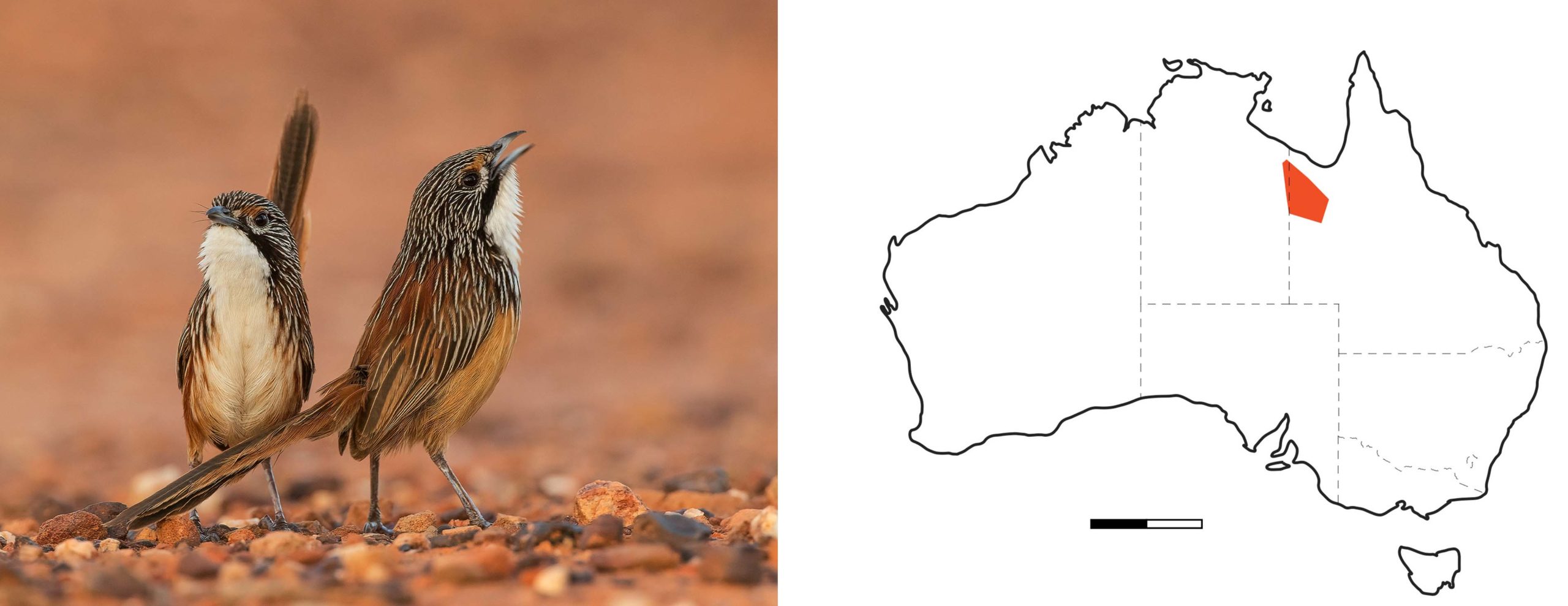
Plains-wanderer (Pedionomus torquatus): The Plains-wanderer is an avian oddball, a mysterious little grassland specialist with no close relatives. Elusive and shy, these birds are most often encountered spotlighting at night, startled from their roost on the ground. They crane up on tiptoe when alerted to danger then crouch down to make a dash for cover. The fate of the Plains-wanderer is connected to its favoured sparse native grasslands, with records from the Victoria–New South Wales Riverina up through northern South Australia and into western Queensland. With an estimated population of just 250, this is one of Australia’s rarest birds.
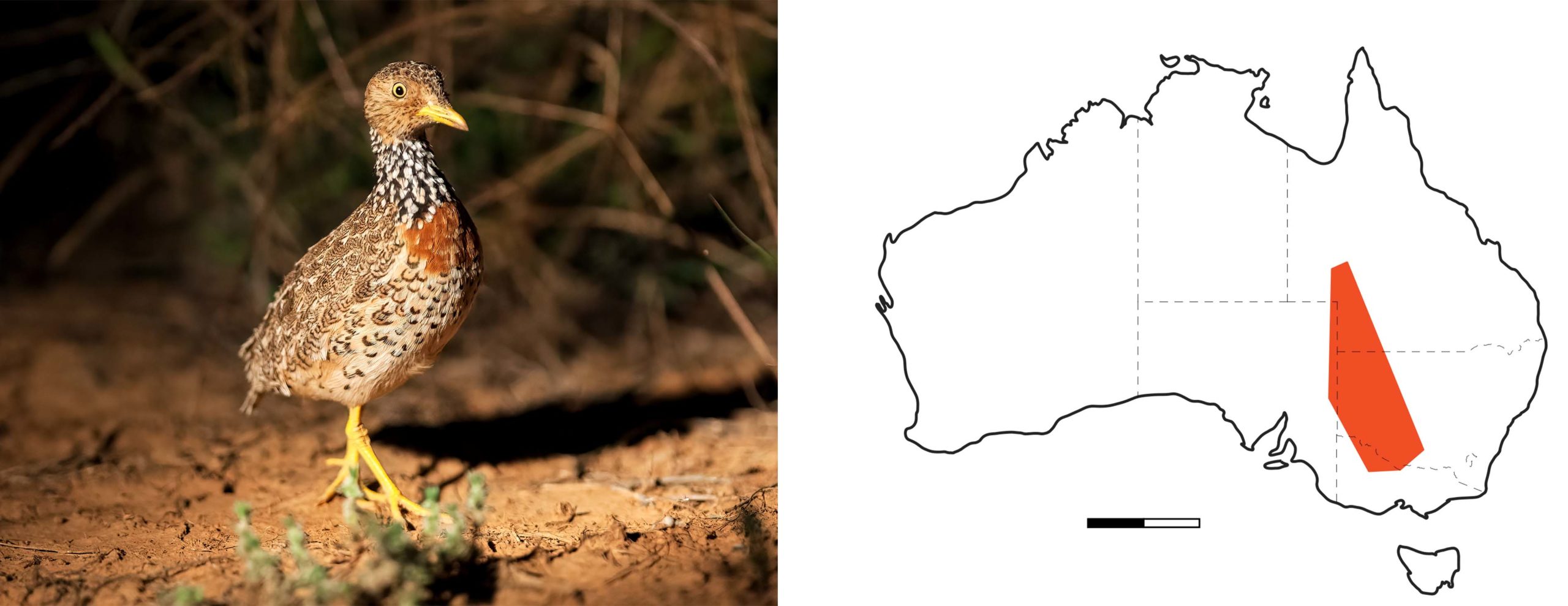
Kowari (Dasyuroides byrnei): You would not wish to run into a Kowari on a dark desert night – at least not if you’re a hopping mouse. Built like a scaled-down Tasmanian Devil, this micro predator can take down prey as big as a rabbit, despite weighing less than your headtorch (75–175 grams). These hunters are integral to desert food webs. In dry times Kowari feed mostly on arthropods, but they shift to larger prey including the native Long-haired Rat in times of plenty. The Kowari prowls the polished gibber plains of the Kati Thanda–Lake Eyre Basin, burrowing into softer sandy patches or taking shelter in Bilby burrows by day, and emerging to hunt under the stars.
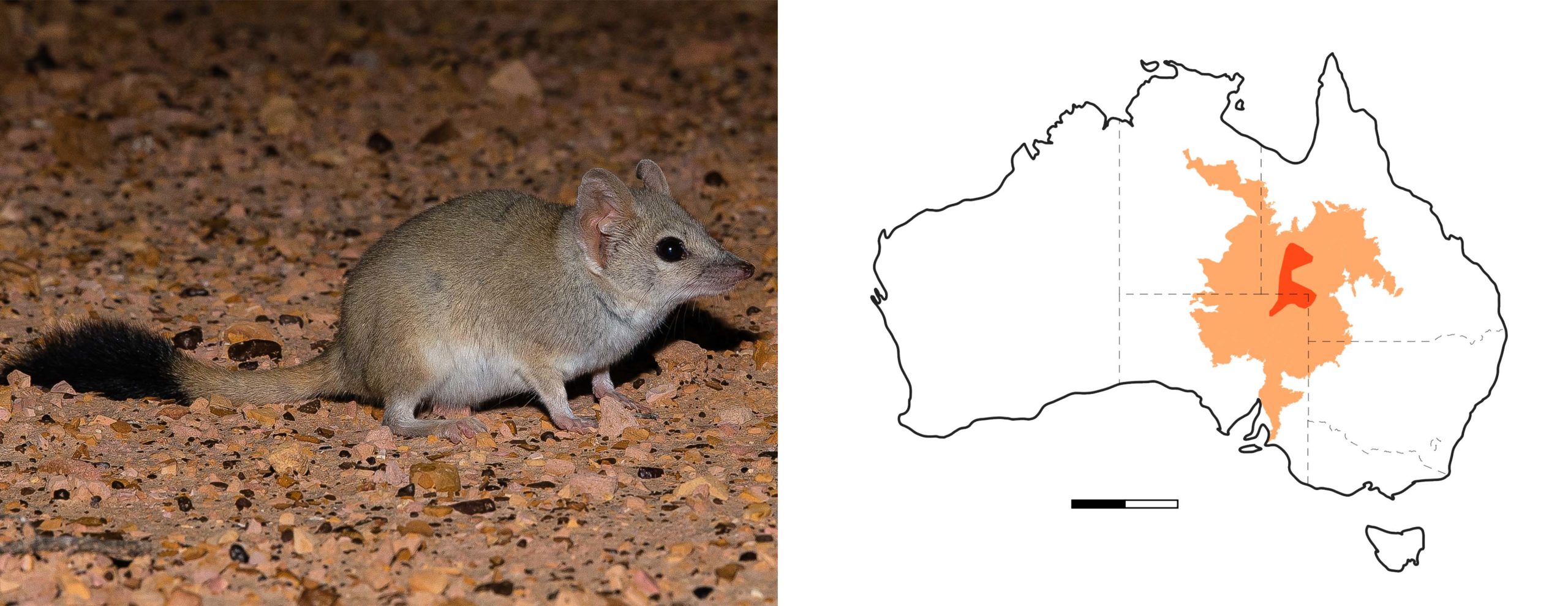
Purple-necked Rock-wallaby (Petrogale purpureicollis): Australia’s rock-wallabies seem to defy gravity as they slip swiftly across vertical terrain, moving with ease along any axis of a rocky escarpment or outcrop. There are at least 17 species, scattered across the continent wherever rocky outcrops are exposed. Found from near Winton to Boodjamulla (Lawn Hill) National Park in the Gulf, the Purple-necked Rock-wallaby is unique, with a faint purple-mauve blush colouring its neck and head. Goats have been implicated in habitat degradation that has led to extinction of some populations, while inappropriate fire patterns, fuelled partly by invading buffel grass, are likely to compound the pervasive threat of feral cats.
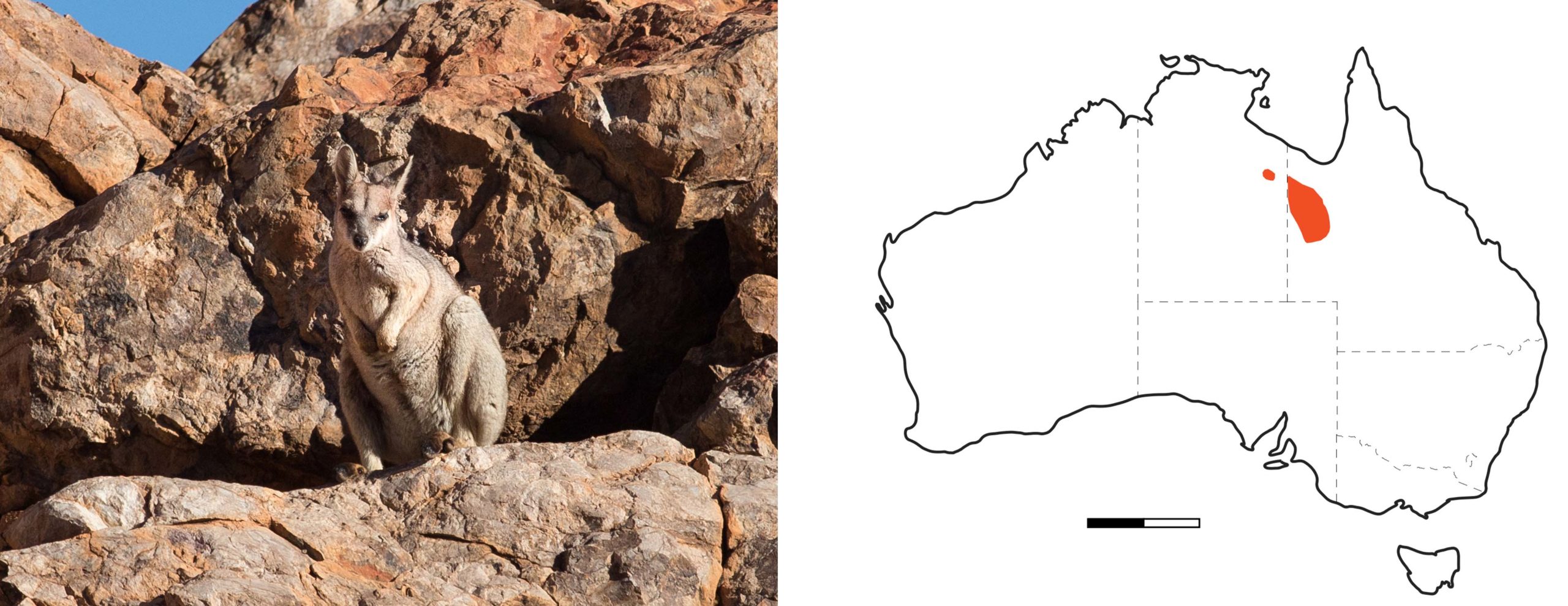
Julia Creek Dunnart (Sminthopsis douglasi): The Julia Creek Dunnart is Australia’s largest dunnart species (12 centimetres, with a tail that long again), but until 1992 it was known from just a handful of specimens. This little carnivorous marsupial has a distinctive dark stripe running down its nose and a dark facial stripe around its large eyes. It is nocturnal, seeking shelter in the cracking clay soils of Mitchell Grass Downs and snacking on crickets, spiders and cockroaches. A high proportion of its range overlaps with land used for sheep and cattle grazing. Feral cats have been shown to prey heavily on these dunnarts, representing the greatest threat to the species’ survival.
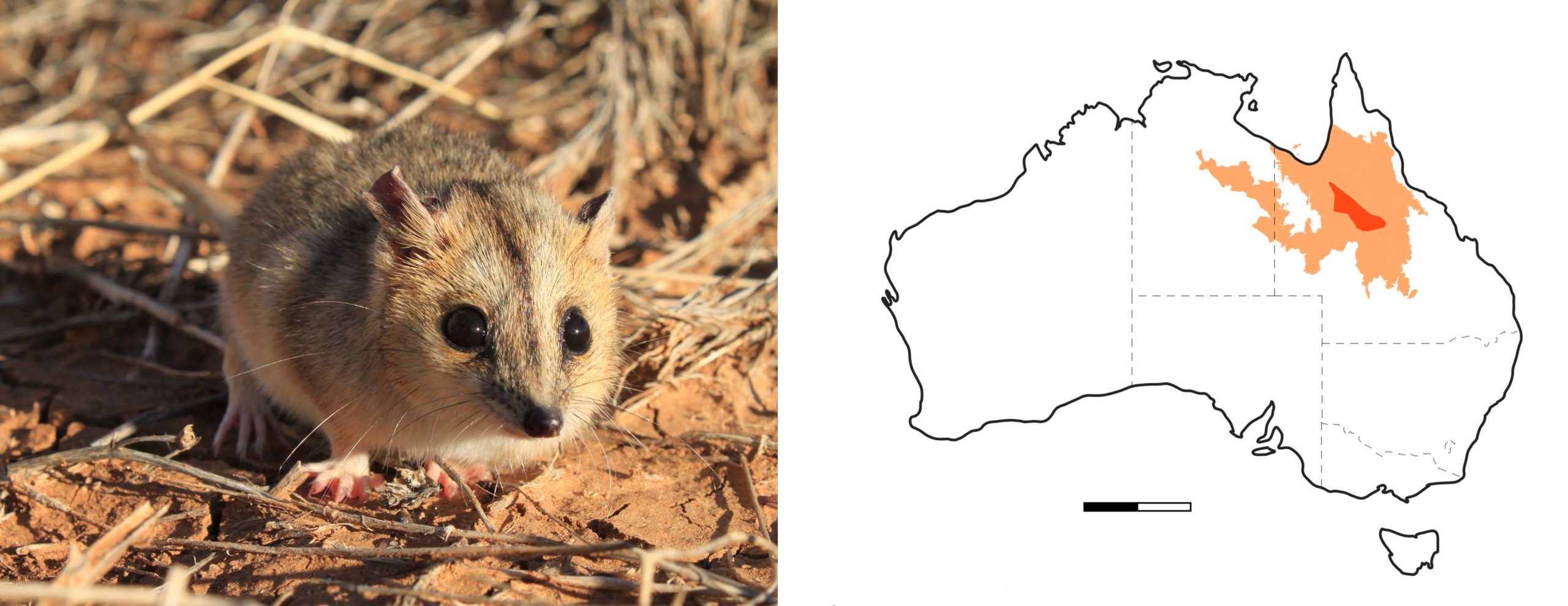
Roma Earless Dragon (Tympanocryptis wilsoni): Australia is a land of dragons – more than 100 species are currently recognised in the family that includes such icons as the Frilled Lizard and Thorny Devil. A more discreet group are known as the Earless Dragons; small, squat lizards with keeled scales, found mostly in the arid zone. These dragons do their best to blend in, with cryptic patterns of stripes and bars that perfectly match their grassy or rocky habitats. Of the 20 Australian snakes and lizards recently identified at greatest risk of extinction, 5 are Earless Dragons with extremely small ranges. A distinct species found near Roma in Queensland’s Darling Downs was only formally described in 2014.
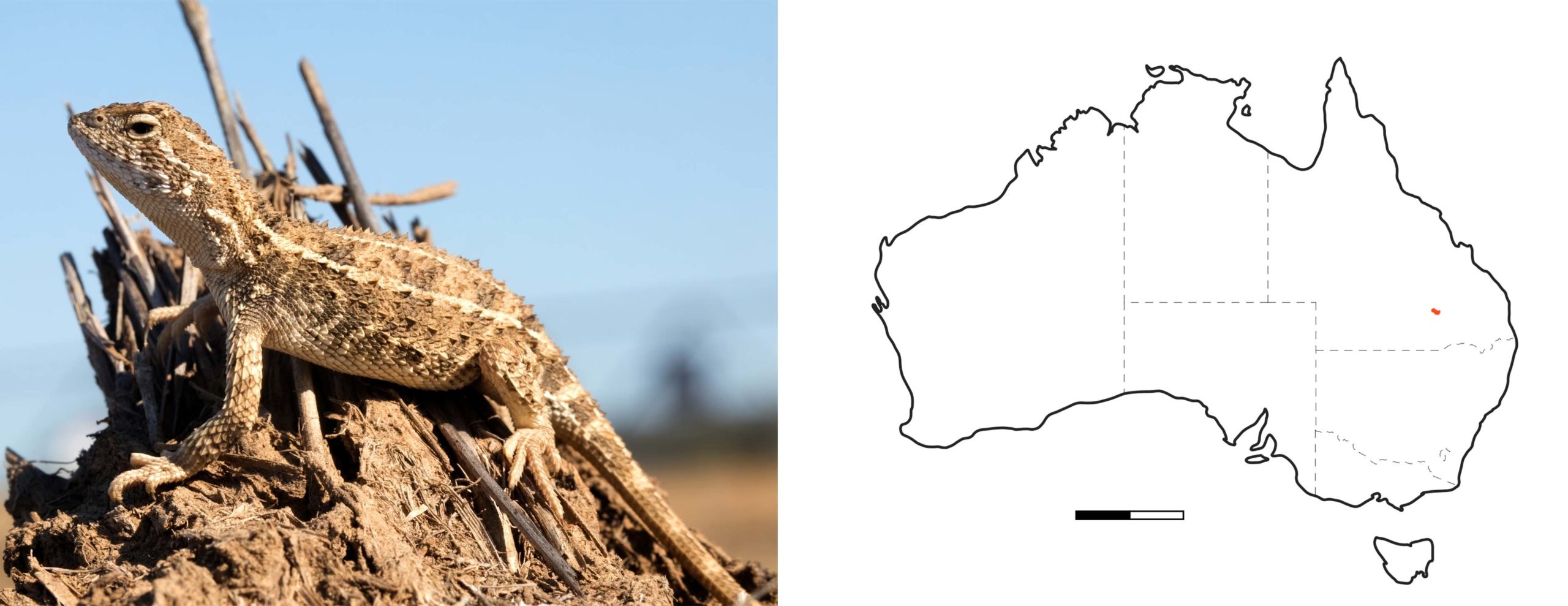
Read and download the full issue of Wildlife Matters here.
Donate to help save Australia’s threatened wildlife and wild places
Donate Now